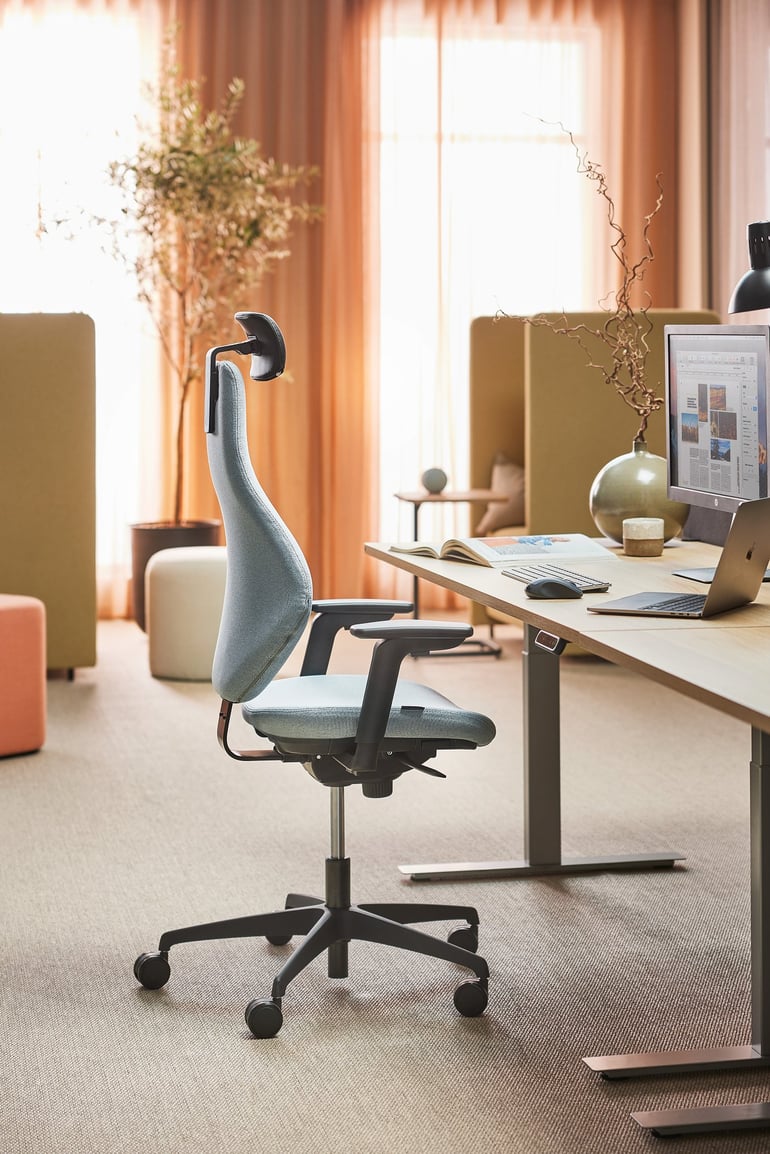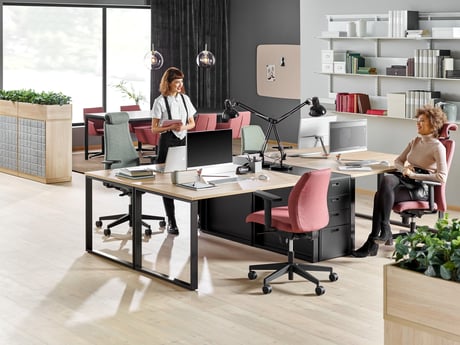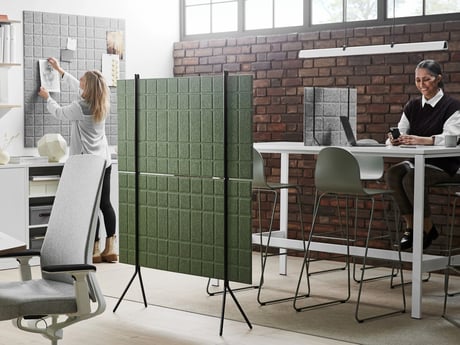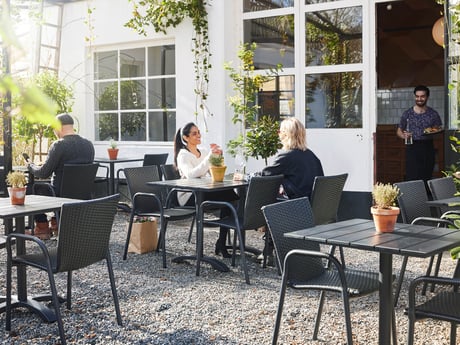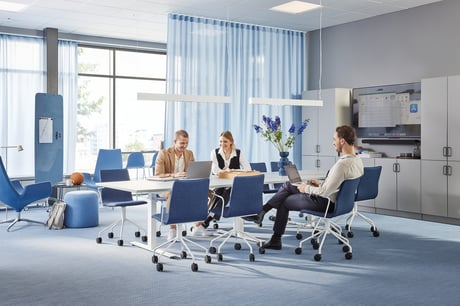- AJ Products UK
- Blog: Tips to Inspire Happiness at Work
- Tips & trends
- One Simple Design Choice That Can Transform a Workspace in 2025
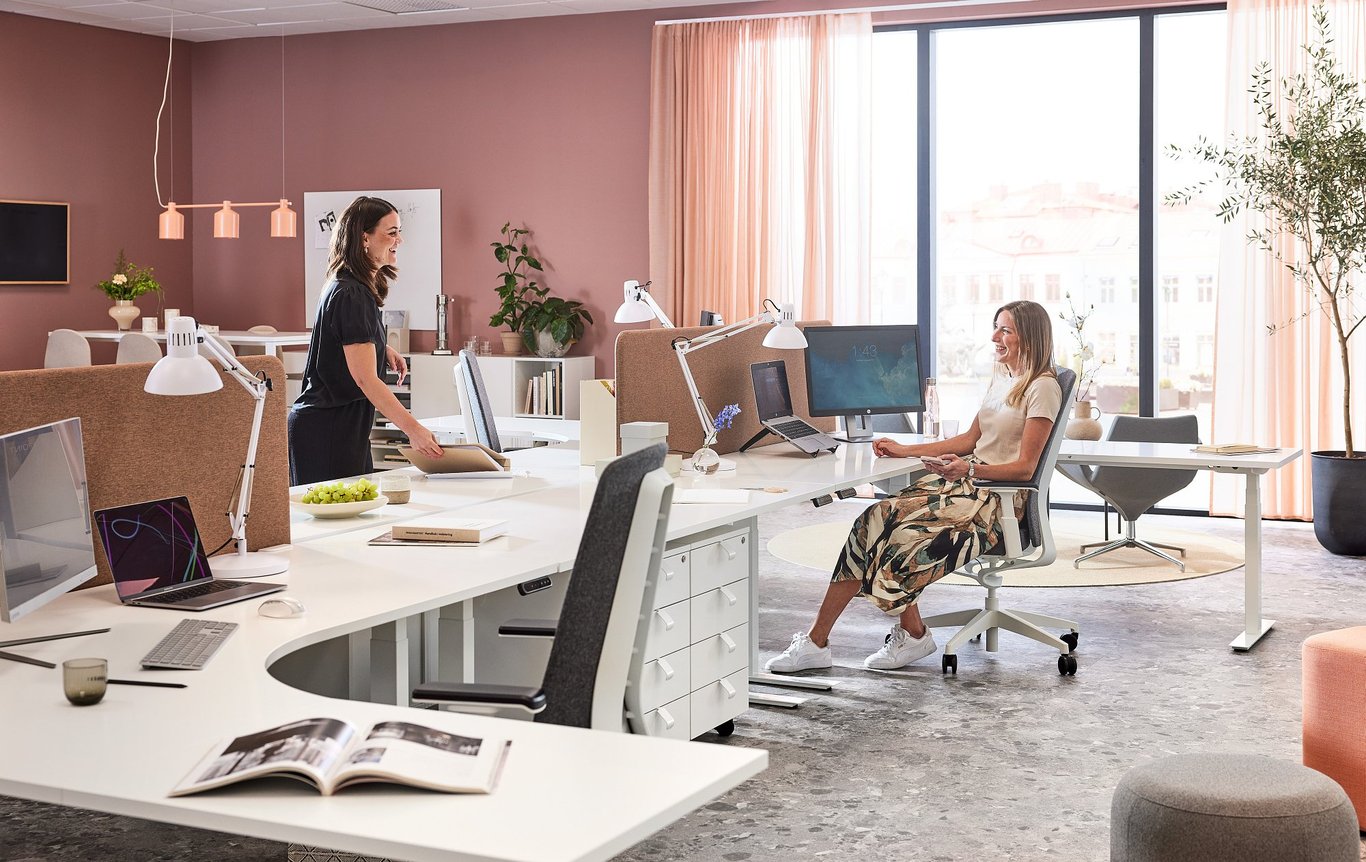
One Simple Design Choice That Can Transform a Workspace in 2025
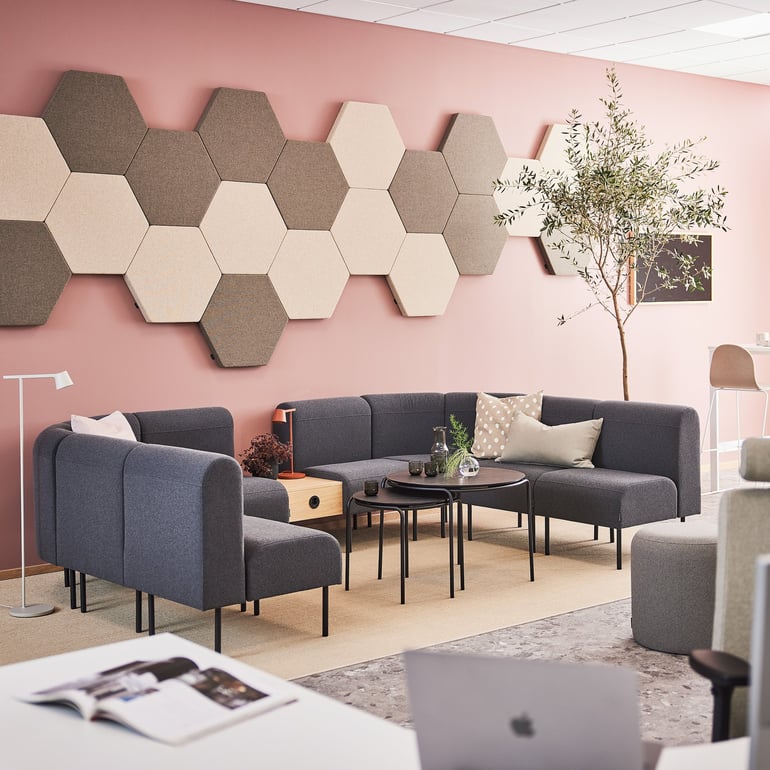
Nature-Inspired Zoning with a Human Touch
"At Office Designer, we’ve been exploring how tactile, organic elements like curved wooden partitions, moss panels, or even clay plastered accent walls can define areas without enclosing them. It is a gentle yet strategic way to shape flow, support wellbeing, and encourage both collaboration and calm in one space.
This approach moves beyond the trend of bringing the outside in. It reflects a deeper design shift, a desire for spaces that ground us, inspire creativity, and feel intuitively human. In an age where hybrid work has blurred the lines between home and office, details like these remind us that function does not need to come at the cost of feeling. Sometimes, a beautifully textured wall can soften not just acoustics but the entire workplace atmosphere."
Lighting That Lifts the Space and the People
Georgia Salter-Randall, Mid-Weight Designer at Interaction UK
Georgia Salter-Randall is a designer at Interaction, a leading workplace design and build company. Having joined through a highly competitive placement programme, Georgia’s passion for design has been clear from a young age, and she’s become known for transforming complex briefs into spaces that are both creative and thoughtfully considered.
"Good lighting design strikes a balance between different light levels throughout the space – something sustainability and wellbeing guidelines strongly encourage. A mix of natural light, focused task lighting and warm, low-level ambient light can completely change how a workspace looks and feels.
Ultimately, by being really intentional with different lighting types, you can turn a workspace into a place that’s practical, beautiful and supports wellbeing. It's a small detail that makes a big difference."
Smarter Furniture for Sustainable Futures
In 2024, she was named Rising Star at the Bristol Property Awards for her impact on workplace design.
"This not only extends the lifespan of the furniture but also supports a more circular approach – covers can be cleaned more easily, and if a client fancies a new colour or fabric, it’s a simple update instead of buying new pieces.
Manufacturers that prioritise sustainability are great at this, designing their furniture so materials can be separated easily at the end of life – no glue, staples or annoying fixings. It’s a clever design tweak that means reclaiming and reusing materials is much simpler. It’s all about making sustainable design the default, even if it costs a bit more initially."
